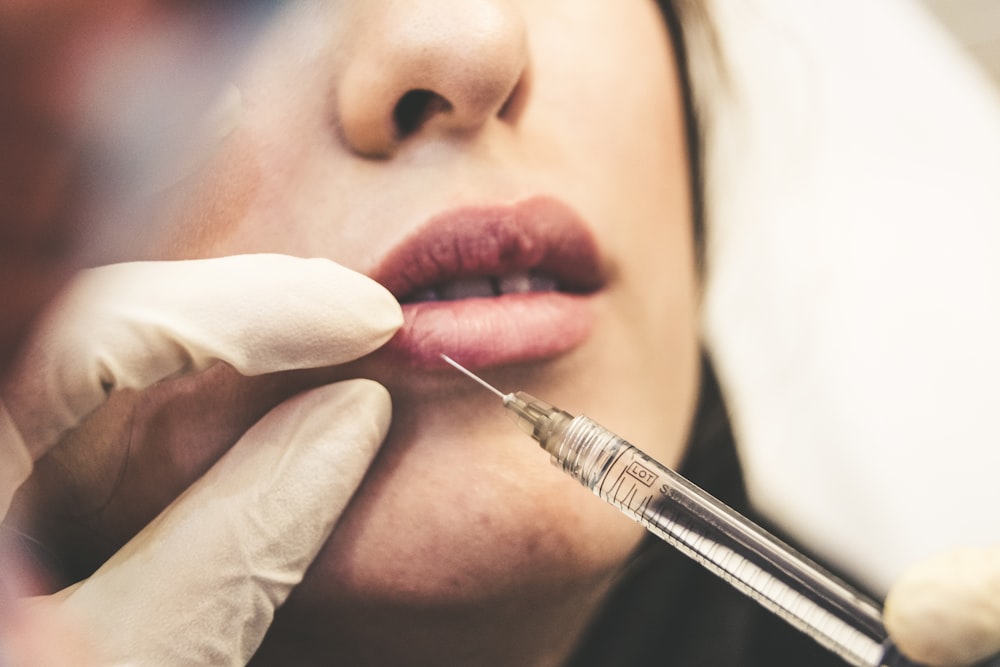Fillers are becoming increasingly popular among people who want to look younger and reduce the appearance of wrinkles without undergoing surgery. But before you consider using fillers, it is important to understand what they are, how they work, and their potential risks so that you can make an informed decision about your health and beauty routine. Here are six key things you should know about fillers – what exactly they are, the types of filler available, their effectiveness in reducing wrinkles, and much more. By learning more about fillers, you can decide if this treatment is right for you!
What Are Fillers?
Fillers, also known as dermal fillers or soft tissue fillers, are substances injected into the skin to add volume, restore youthful contours, and reduce the appearance of wrinkles and fine lines. You can get your desired lip shape with professional fillers and they are typically made from various materials such as hyaluronic acid, collagen, calcium hydroxylapatite, or poly-L-lactic acid. These substances work by plumping up the skin and filling in areas where collagen and fat may have diminished over time due to aging or other factors.
Types of Fillers
There are several types of fillers available, each with its unique properties and benefits. The most commonly used fillers are hyaluronic acid (HA) fillers, which are known for their natural-looking results and temporary effects. Other types include collagen fillers, which are derived from either human or animal sources, and synthetic fillers like calcium hydroxylapatite and poly-L-lactic acid. It’s important to consult with a qualified professional to determine which type of filler is best suited for your specific needs and goals. In addition to the commonly used hyaluronic acid fillers, collagen fillers have been used for many years to restore volume and smooth out wrinkles.
- Collagen fillers can be derived from either human or animal sources. Human-derived collagen fillers are less commonly used nowadays due to concerns about allergic reactions and the availability of more advanced options. Animal-derived collagen fillers, typically sourced from cows, require allergy testing prior to treatment.
- Synthetic fillers, such as calcium hydroxylapatite and poly-L-lactic acid, offer longer-lasting effects compared to hyaluronic acid and collagen fillers. Calcium hydroxylapatite is a biocompatible substance that stimulates collagen production and provides a natural-looking outcome. It is often used to address deeper wrinkles and facial creases, as well as to restore volume in the cheeks and hands.
- Poly-L-lactic acid, on the other hand, stimulates collagen synthesis over time, resulting in gradual and natural-looking volume restoration. It is commonly used for filling in deeper facial lines and hollow areas.
Effectiveness in Reducing Wrinkles
Fillers are highly effective in reducing the appearance of wrinkles and fine lines. By adding volume to the treated areas, they smooth out the skin, creating a more youthful and refreshed appearance. However, it’s essential to have realistic expectations and understand that fillers are not permanent solutions. The results typically last anywhere from several months to over a year, depending on the type of filler used and individual factors such as metabolism and lifestyle.
Choosing a Qualified Practitioner
When considering fillers, it is crucial to choose a qualified and experienced practitioner. The administration of fillers requires skill and expertise to achieve safe and desirable outcomes. Look for a licensed medical professional, such as a dermatologist or plastic surgeon, who has received specialized training in administering fillers. They should have a thorough understanding of facial anatomy and be able to assess your unique needs to provide personalized treatment.
Potential Risks and Side Effects
While fillers are generally safe, like any medical procedure, they carry potential risks and side effects. Common side effects may include temporary redness, swelling, bruising, or itching at the injection site. These usually resolve on their own within a few days. However, more severe complications such as infection, allergic reactions, or vascular occlusion (blockage of blood vessels) are rare but possible. Choosing a qualified practitioner and following their post-treatment care instructions can minimize the risk of adverse events.
Maintenance and Long-Term Care
Fillers provide temporary results, and to maintain the desired effects, additional treatments are usually necessary. Depending on the type of filler used and individual factors, touch-up sessions may be needed every few months to a year. It’s important to discuss a maintenance plan with your practitioner to ensure long-term satisfaction with your results. Additionally, practicing a healthy lifestyle, including protecting your skin from sun damage and avoiding smoking, can help prolong the benefits of fillers.
Fillers offer a non-surgical option for individuals seeking to reduce the appearance of wrinkles and achieve a more youthful look. Understanding the basics of fillers, such as their composition, types, effectiveness, risks, and maintenance, is crucial in making an informed decision about incorporating them into your beauty routine. By consulting with a qualified professional and considering your individual needs and expectations, you can determine whether fillers are the right choice for you. Remember, the ultimate goal is to enhance your natural beauty and feel confident in your own skin.
Published by HOLR Magazine.




